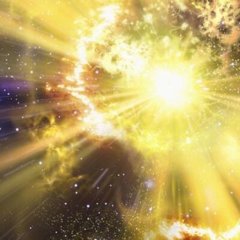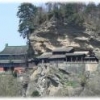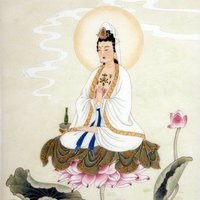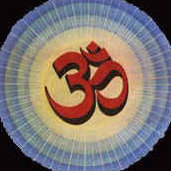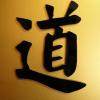-
Content count
9,087 -
Joined
-
Last visited
-
Days Won
16
About ChiDragon
-
Rank
無為道人
Profile Information
-
Gender
He
Recent Profile Visitors
44,972 profile views
-

Fajin (發勁), executing an explosive force
ChiDragon replied to ChiDragon's topic in Daoist Discussion
Jin is an interesting subject to investigate. The more we discuss about Jin the more we will understand what it is. IMMHO Jin by itself, in a Taiji body, is not an explosive force. It is only a potential energy that is ready to be issued by Fajin. Jin is not an explosive force, yet, until it was issued by the practitioner. The powerful Fajin force is very deadly if someone cannot withstand the impact of contact.In regard to the different types of Jin, they are really, only, describing the methods of Fajin. There are 8 types of Fajin methods are well known and recognized by Taiji practitioners. They are 掤劲、捋劲、挤劲、按劲、采劲 、 挒劲、肘劲、靠劲. -
Yes, Jin is an interesting subject to investigate. The more we discuss about Jin the more we will understand what it is. IMMHO Jin by itself, in a Taiji body, is not an explosive force. It is only a potential energy that is ready to be issued by Fajin. Jin is not an explosive force, yet, until it was issued by the practitioner. The powerful Fajin force is very deadly if someone cannot withstand the impact of contact. In regard to the different types of Jin, the 40 descriptions of Jin above are not really Jin themselves. Like I said they are only descriptions. They are really, only, describing the methods of Fajin. There are 8 types of Fajin methods are well known and recognized by Taiji practitioners. They are 掤劲、捋劲、挤劲、按劲、采劲 、 挒劲、肘劲、靠劲. All the rest, I think, they are probably using the idea of Fajin borrowed from the Taiji practitioners by other martial artists. Anyway, this is only my understanding for now.
-
Yes, push-hand is only a practice to learn to control one's body strength which was known as Jin(勁). However, in the other hand, one blow with Fajin on the chest can stop someone's heartbeat. That is how powerful Jin was. PS The powerful Jin, explosive force, is the defensive feature of Taiji to disable the opponent in combat.
-
@FluffyGuardian I think this says all about Sanshou and MMA. I do not wish to go any further to argue about semantics and translations.Thanks! HAHA..... You may laugh all you want. Whatever I had said still stands.
-
I guess you still not have a good grasp on Tuishou. Tuishou is two people touching each other, and tries to feel a resisting force from one another. As soon the resisting force was detected from one, the other will perform fajin and give it a big push. Hence, that is the only time one is doing the pushing. However, when they are touching each other, the touching force should be slightly but not pushing hard. In conclusion, in Tuishou, it wasn't not to push at all. Rather, one must know when to do the pushing.
-
Please don't discriminate the styles of Taiji. The principal of fajin is the same in all the styles. Just pay close attention in the video. When the master, at the left, moves his hands forward, he was performing Fajin.
-
There are too many videos out there showing the improper way of doing Tuishou. So, this is the best demonstration I have seen so far. Please notice the softness in the arms of the practitioners at 0.57. That is the proper way how to do Tuishou.
-
I believe that Sanshou(散手) was translated or understood as MMA in English. One should not try to translate the compound characters word for word. There is a thought behind each compound character. If each character was translated, then, the idea behind the term will be lost in the translation.
-
Well, there is no need to spell out everything. The first mistake he made by pushing too hard is enough to make it invalid. He violated the basic rule of push-hand. Leaning forward causing the body to cross the centerline was understood is a no no.
-
OKay, you meant 不發. So, it is.
-
FYI We are not looking at the different styles. The emphasis should be the technique. The guy at the left is pushing too hard with the lack of softness. That was why his opponent took advantage of him by twisting his arm with fajin.
-
散手”(也称“散打”),在现代语境下,是指一种以中国武术为基础,融合了踢、打、摔等攻防技法的徒手格斗技击项目。 Is this what you mean?
-
Just want to distinguish the difference between Tuishou(推手)and Sanshou(散手). In general, Tuishou involves contact the hands with a slight touch. Sanshou is MMA that involves striking, kicking, and flipping.
-
Yes, it is very important. Bu Fa(步法) is every step you took that should and will keep one in a most stable position to maintain body balance.
-
Let's keep in mind. Before we jump into combat, we must know what is the purpose of practicing Tuishou. The prerequisite is to develop the jin in the body in the first place. How can one fajin without conditioning the body first? Why do people practice Taiji day by day? One will notice the difference in the body strength from years of practice. The increase of tremendous strength indicates that jin has been developed in the body. Now, what should one do with all the body power? The next thing is to learn how to use it and control it. So, we go into Tuishou with a partner at a same level of skill. Since jin is hard, we must learn to soften it by doing "touch and follow". To do that is by having the hands of the partners barely touching instead of pushing real hard. Even with a little tiny push by one person, the other partner should be able feel it right away. This sensation was known as Ting Jin(聼勁). Hence, that is the main purpose of practicing Tuishou. The next thing to learn is how to neutralize the incoming force. Instead of pushing against it, it was pulled and guided away from the defender's body. While pulling, at the same time, it is time to Fajin. While the offender is pushing and the defender is pulling in the same direction, that will put the offender is an off balance position. The offender will do a Fajin maneuver to do whatever it needs to be done. This is what Tuishou was all about.




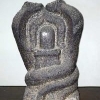
.thumb.jpg.7621d8e4dd2d0d878c4efc817a267564.jpg)



